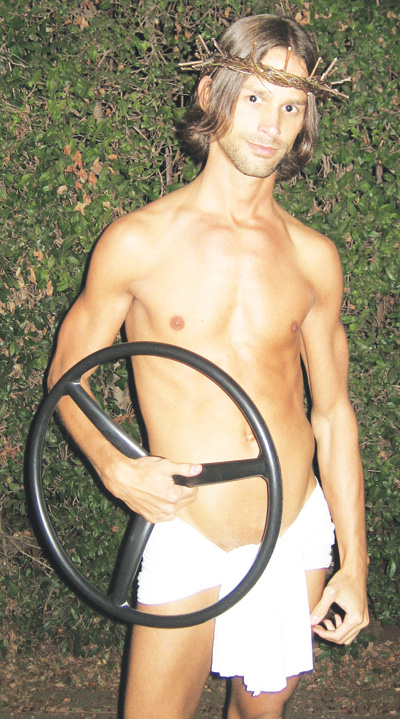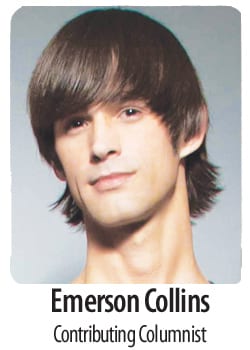Halloween costumes in the LGBT community can run the gamut, but it’s all about the dress-up fun

Halloween is a special holiday that allows imagination and personal expression to run completely wild. For children, it is a day to dress up as their heroes, favorite characters or to take the power away from scary things in a sugary celebration of the weird and the awesome. I wore my Superman pajamas with the detachable Velcro cape for too many years in a row because I loved it, and also because I was getting away with wearing my pajamas in public. Score!
For many adults, Halloween is a return to that childlike enthusiasm for a night of anything goes dress up, but with the tastes, desires and experiences of adulthood driving the costume choices. In the LGBT community, Halloween is often nicknamed “Gay Christmas.” With the extremes-in-every-direction approach to costumes seen at LGBT events, the unofficial title is quite apropos.
Members of our community regularly top both the best and worst lists — and with good reason.
The “best” involve intricate and elaborate costumes that require a mind-boggling number of hours in preparation for a reveal that is awe-inspiringly impactful.
Those landing on the “worst” list tend to be the result of taking a look at the line of what is considered tasteful and tap-dancing so far across it that it cannot even be seen in the rearview mirror.
Of course, whether a costume is entered in a contest it will absolutely be judged — for its inspiration, execution, theme, fit, style, appropriateness, commentary — or all of the above. The listicles of great Halloween costumes across the social media-verse are now equaled or surpassed by the attention paid to the lists of the worst Halloween costumes.
There are two modern themes to the “worst” Halloween costumes, and the LGBT community succeeds (or fails, depending on your perspective) in providing both in abundance. The first is the “Sexy (insert profession here)” costume. Women of a certain age and look are most often criticized for taking a random profession or character and dropping the neckline and shortening the skirt length to make it sexy in a way that smacks greatly of misogyny.
However, within our community, men who take the barely-there approach to pulling a costume into the sexy category are often judged similarly to those women. The sexy costume gets renamed the “slutty costume” by derisive critics in a way that implies both that you can determine someone’s level of promiscuity by the amount of the skin they show and that a variety-based sexual appetite is inherently negative.
Judgy slut-shaming for the win!
Why care so much? How many in our community have had — or still have — negative body images? How many who look great worked hard to arrive at that place as a result of bullying for being too fat or too skinny or too something else?
Why shouldn’t all of us take a night designed for self-expression to play pretend in the way that makes us most happy? Whether that’s a rhinestone studded thong and tap shoes or a three-piece tuxedo with a wax-filled 1950s up-do, any self-expression should be acceptable without others indulging the need to pull the epic eyeroll out of the arsenal because a group of half-naked sexy sailors saunters by.
 The other end of the “worst” spectrum is the world of edgy costumes. Some call them offensive, but since being offended is in the eye of the beholder, that label is particularly subjective.
The other end of the “worst” spectrum is the world of edgy costumes. Some call them offensive, but since being offended is in the eye of the beholder, that label is particularly subjective.
However, the list of what constitutes an “offensive” costume gets longer online every year.
A great deal of LGBT art has always pushed at the boundaries of the acceptable. As a result, that flair for the dramatic and offensive leaps to the forefront for some at Halloween. After all, considering what drag queens do nightly, it can take a great deal of effort to make a costume feel noteworthy.
There are costumes that are witty, wordplay, pop culture-oriented and those that mock anything and everything someone might hold dear, from culture to religion to dead celebrities and beyond. The goal of some of these costumes is to get that “I can’t believe you did that” reaction, and in our modern, super-sensitive and politically-correct society we overreact in a way that is rather comical.
I’m not saying that those who object to costumes based on implications of racism, bigotry, various phobias and the destruction of general good taste do not have a point in some cases. But where is the line?
Is a homo who dons a kimono to be “Memoirs of a GAYsha” being amusing in drag or appropriating Japanese culture? Is every straight, cisgender guy in a dress mocking women, gay men or being transphobic? Is being a sexy doctor insulting to those who attended years of additional schooling in order to provide live-saving services to our society?
Is Pocahontas okay for a little girl? For a grown woman? For a white man? Where is it affection for a Disney film and where is it belittling Native Americans? Where does the sensitivity end?
Certainly some thought should be given to how extremely marginalized communities are portrayed and whether a costume is silly or perpetuating stereotypes that put members of that community in danger. Every year one or two people, who must not have access to the Internet or a history book, decide that some version of blackface will just be hilarious and the explosive response demonstrates there is actually a generally understood line out there that should not be crossed.
It just seems the line is rapidly moving toward a place where anything even slightly over the line and into the areas of dark comedy, satire or simply shocking is met with unnecessary outrage.
The issues that some kinds of potentially offensive costumes bring up are definitely important. On nearly every one of those issues though, there is a better cultural form of systemic oppression that exists daily that is a better way to address the issue from a substance-based perspective.
So yes, some costumes will be offensive, racist, sexist or insulting to someone’s culture, beliefs or world-view. The wearer may have done it on purpose, or they may be that stupid. If their bigotry or privilege bothers you, let them know that. That’s your right just as it is theirs to dress up in whatever ridiculous way they choose.
Maybe we can also acknowledge that photos of the dumbest people in America dressed up as nonsense is not the greatest opening to deep conversations about social justice and the pervasive nature of privilege. We could just not get worked up by stupid.
Full disclosure — I may be fully biased on this subject. Every year, I work toward a silly gay costume that is both slutty and wordplay. Because I’m easily amused.
My favorite costume ever involved a loin cloth, a crown of thorns crafted from a wreath from Michael’s and a John Deere tractor steering wheel as “Jesus Take The Wheel.” And yes, some people were offended. Jesus did not weigh in.
So, however you spend it, whether sexy, smart, slutty, silly or face first in a bowl full of candy you decided to keep rather than hand out to children — have a Happy Halloween. Let’s save the outrage and judgment for things that actually matter far more than a night of overblown dress up.
Emerson Collins is one of the hosts of The People’s Couch on Bravo.
This article appeared in the Dallas Voice print edition October 31, 2014.
















